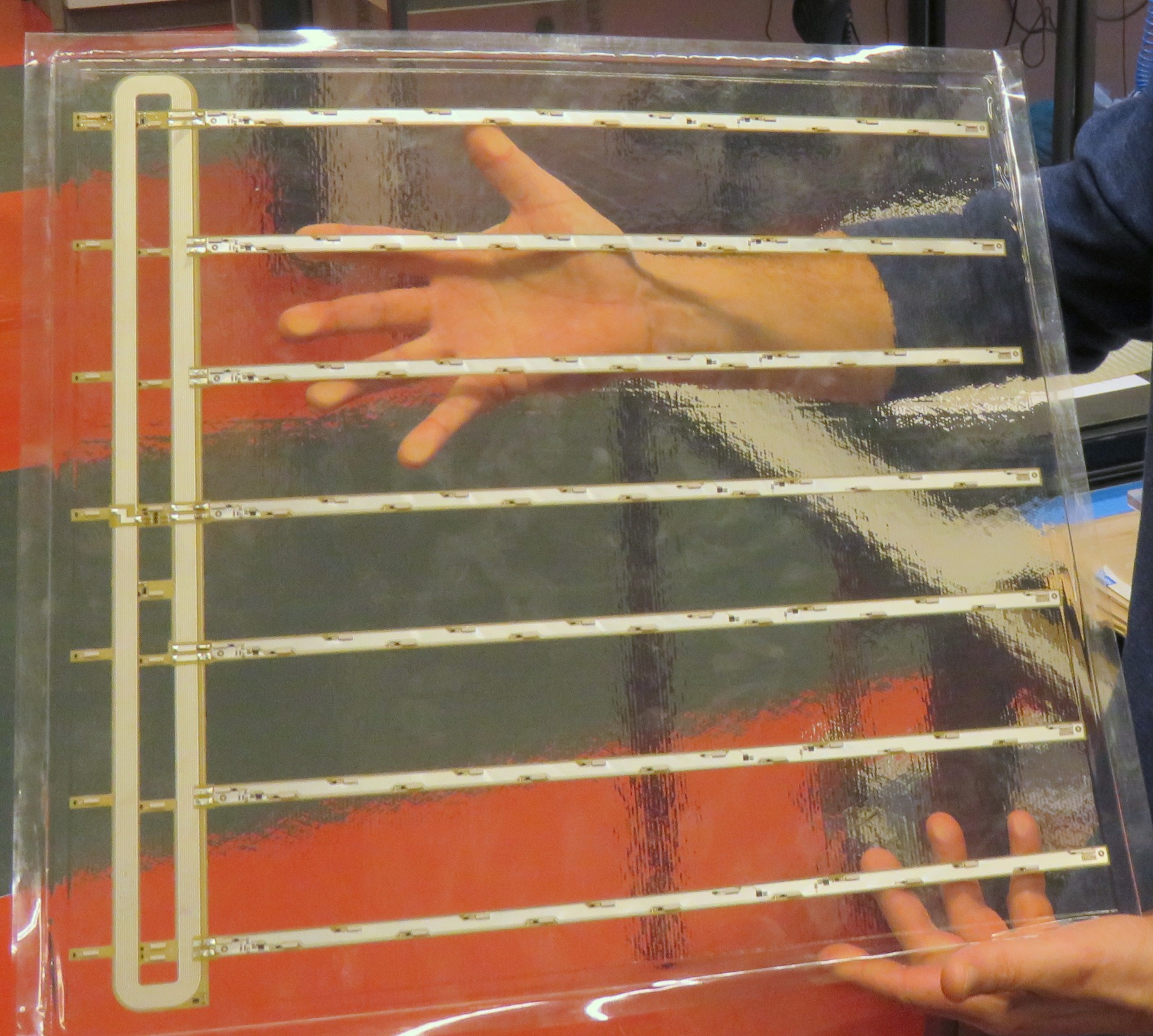The demand for fuel efficiency is increasing and driving technology forms to investigate new solutions to meet this need. Coatings maker Akzo Nobel announced last year that it had launched a project investigating the possibility of UV-light on ships hulls, we sent Samantha Fisk to find out how things were progressing..
To try and reduce or eliminate hull fouling from ships AkzoNobel announced in early 2018 it was teaming up with Royal Philips to develop a tile solution with ultra-violet LED diodes. The work to bring the market has been progressing in the past two years with trials on vessels well underway.
Michael Hindmarsh, Akzo Nobel’s Incubator Lead, highlights that requirements for fouling control are tightening. and while fouling such as slime may have been tolerated three year ago, mostly as it was deemed unavoidable in most conditions which is no longer the case today.
“In the current era where vessel performance monitoring is on the increase and operational efficiencies and the consequential effects on operational economics and emissions are very high on the agenda, any fouling whether it macro or micro is becoming unacceptable,” he says.
Work by regulators on reducing the environmental impact of invasive species is also having an impact on what can and can not be done. The long running work on preventing alien species being transferred by ships’ ballast water has highlighted the difficulties in solving the problem.
And while coating manufacturers have been working hard to find ever more effective ways of keeping hulls slick and smooth to keep fuel consumption low, they are also aware of the guidelines, and in some places regulations, on biofouling to prevent this continued spread.
So Akzo Nobel turned to ultraviolet light, a solution already being used by a number of ballast water treatment system makers to ensure ballast water is compliant with the ballast water convention.
“it was a natural progression to exploit the benefits that UV brings in keeping objects biologically clean”, notes Hindmarsh.
Companies such as French-based Bio-UV has used UV treatment in ballast water systems, due to the technology being a proven technology in other industries such as healthcare and industrial water processing. There has been a surge in the cruise ship industry with UV ballast water systems being installed. The company noted earlier this year that 80% of the cruise ship market has opted for UV treatment onboard.
Hindmarsh notes about tests of AkzoNobel’s own panel system that by using ultraviolet light it: “Eliminates all fouling growth completely; the surface of the tile is entirely free of bacteria, diatoms, biofilm (slime) and soft or hard fouling species.”

The UV-C LED tile concept is based on semi flexible polymeric tiles that have the UV-C LED’s embedded into them. The tiles are adhered to the outside hull of a vessel over a prepared full anticorrosive system. The tiles are powered by an inductive coil system which means that the tiles themselves can be hermetically sealed to protect the electronics. The UV-C LED’s are attached to printed circuit boards arranged in specially designed array’s which have been optimised to achieve the required transmission of UV-C to 100% of the surface of each tile, the company states in its promotion of the system.
One of the biggest challenges that AkzoNobel has encountered in the development of the tiles has been the limitation of materials that can be used.
“The main tile material needs to be UV-C transparent to maximise efficiency but also extremely stable to prolonged UV-C exposure; other elements of the tile need to be UV-C reflective or UV-C blocking”, Hindmarsh explains.
Other challenges that the company has also had to negotiate in the development of the tiles has been making the LEDs and printed circuit boards waterproof, which is “significantly harder than achieving splash proof or temporary water immersion acceptability for consumer electronics. Along with this issues had been one of finding the correct adhesive for the tiles to keep their permanence once installed adds Hindmarsh. Currently, the company is testing “dummy” tiles using different adhesives that have been placed on vessels in locations of high sheer. It hoped that once testing is completed that an adhesive that can handle high levels of sheer will be found.
Although the tiles are not your traditional coating method, they will still need to meet with the Anti Fouling Systems (AFS) regulations. However, Hindmarsh notes that the regulation has had a positive impact having rid the market of the damaging tin-based coating products.
“The AFS Convention may still dictate that we need to provide a tin-free certificate for the vessel until the solution is deemed mainstream and disruptive enough for amendments to the convention to be warranted.”
Further complications with complying with regulations may still arise in the future with having to comply with other regulations that other paints and coatings do not, such as safe use and deployment of UV-C, which the company is still looking in to.
While the company is currently testing 4th generation tiles on some coastal vessels where the company can gain rapid access to inspect the tiles performance, Hindmarsh says that deep sea tile trials are also underway as the company pushes the technology to fuel approval and commercialisation.
































